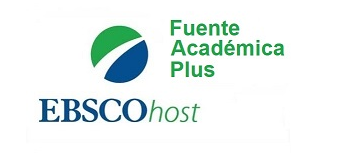Perception of the bioclimatic conditions for teleworking in colombian homes. Bioclimatic conditions for telework in Colombia
Keywords:
bioclimatic, mental health, teleworkingAbstract
Due to the COVID 19 pandemic, teleworking was considered a work alternative. For this reason, it is relevant to verify the bioclimatic conditions of the new workplaces since they can affect labor productivity, mental health, and even people's physical health.
The objective of this research is to identify the perception of people regarding the bioclimatic aspects of teleworking places in comparison with the places that are commonly used in companies for that puporse, and also determine which is the modality of people´s preference (face-to-face, alternation, or virtuality). For this research, the survey method was the information collection technique that was implemented, where 280 people were surveyed in Colombia, mainly in the cities of Medellín, Bogotá, Cali, and Pereira.
Finally, it is very important to consider the selection of the work modality, the bioclimatic performance to improve people's health and the labor productivity.
Downloads
References
Anthes, E. (2020). The great indoors: the surprising science of how buildings shape our behavior, health and happiness. Scientific American/Farrar, Straus and Giroux.
Arango-Díaz, L., Montoya, O., Rendón, L., Tilano, L. & Zapata, C. (2021). Influence of the Thermal and Lighting Performance in Classrooms on the Cognitive Productivity of Students in Colombia. Journal of Green Building, 16(4), 135–164. https://doi.org/10.3992/jgb.16.4.135
Aresta, M. y Salíngaros, N. (2020, Mayo 10). La importancia del espacio doméstico en tiempos de COVID-19. ArchDaily. https://www.archdaily.co/co/938788/la-importancia-de-la-forma-del-espacio-domestico-en-tiempos-de-covid-19
Cachán, C., Carbelo, B., García, M. & Mateo, P. (2012). Estudio sobre la influencia de la iluminación en el rendimiento escolar. Luces CEI, (45), 14–17. https://www.ceisp.com/fileadmin/RevistaLucesCEI/PDF/Luces_CEI_45.pdf
Heschong Mahone Group, Inc. (2003). Windows and Classrooms: A Study of Student Performance and the Indoor Environment (Technical Report). California Energy Commission. https://newbuildings.org/wp-content/uploads/2015/11/A-7_Windows_Classrooms_2.4.101.pdf
Heschong, L. (2002). Daylighting and Human Performance. ASHRAE Journal, 44(6), 65–67. http://www.livingdaylights.nl/wp-content/uploads/2016/12/Heschong-2002.-Daylighting-and-Human-performance..pdf
Heschong, L. (1999). Daylighting in Schools An Investigation into the Relationship Between Daylighting and Human Performance. Condensed Report (Report No. HMG-R-9803). California Board for Energy Efficiency. http://dx.doi.org/10.13140/RG.2.2.31498.31683
Hilbrecht, M., Shaw, S., Johnson, L. & Andrey, J. (2008). ‘I'm Home for the Kids’: Contradictory Implications for Work–Life Balance of Teleworking Mothers. Gender Work and Organization, 15(5), 454–476. https://doi.org/10.1111/j.1468-0432.2008.00413.x
Jiang, J., Wang, D., Liu, Y., Xu, Y. & Liu, J. (2018). A study on pupils’ learning performance and thermal comfort of primary schools in China. Building and Environment, 134, 102–113. https://doi.org/10.1016/J.BUILDENV.2018.02.036
Kalamees, T., Väli, A., Kallavus, U., Kurik, L. & Alev, Ü. (2015). Simulated influence of indoor climate and ventilation on schoolwork performance in Estonian manor schools. International Journal of Ventilation, 14(2), 153–164. https://doi.org/10.1080/14733315.2015.11684077
Kopec, D. (2018). Environmental psychology for design, 3 ed. Fairchild Books.
Kossek, E., Lautsch, B. & Eaton, S. (2009). 6 - “Good teleworking”: Under what conditions does teleworking enhance employees’ well-being? In Y. Amichai-Hamburger (Ed.), Technology and Psychological Well-being (pp. 148–173). Cambridge University Press. https://doi.org/10.1017/CBO9780511635373.007
Morikawa, M. (2020, April 10). COVID-19, teleworking, and productivity. Center for Economic and Policy Research. https://cepr.org/voxeu/columns/covid-19-teleworking-and-productivity
Parker K., Horowitz, J. & Minkin, R. (2022, February 16). COVID-19 Pandemic Continues To Reshape Work in America. Pew Research Center. https://www.pewresearch.org/social-trends/2022/02/16/covid-19-pandemic-continues-to-reshape-work-in-america/
Peiró, J. y Soler, A. (2020). El Impulso al teletrabajo durante el covid-19 y los retos que plantea. IvieExpress. https://www.ivie.es/wp-content/uploads/2020/05/11.Covid19IvieExpress.El-impulso-al-teletrabajo-durante-el-COVID-19-y-los-retos-que-plantea.pdf
RAE. (s.f.). Teletrabajo. https://dle.rae.es/teletrabajo?m=form
Ramos, V., Ramos-Galarza, C. & Tejera, E. (2020). Teleworking in times of COVID-19. Interamerican Journal of Psychology, 54(3), 1–29. https://doi.org/10.30849/ripijp.v54i3.1450
República de Colombia. DANE. (s.f.). Estratificación socioeconómica para servicios públicos domiciliarios. gov.co. https://www.dane.gov.co/index.php/servicios-al-ciudadano/servicios-informacion/estratificacion-socioeconomica
Serna-Cardona, L. (2021). El Covid – 19 (Pandemia) y sus cambios de hábitos sociales en las habilidades empresariales. Uda Akadem, (7), 96–129. https://doi.org/10.33324/udaakadem.vi7.371
Shishegar, N. & Boubekri, M. (2016). Natural Light and Productivity: Analyzing the Impacts of Daylighting on Students’ and Workers’ Health and Alertness. International Journal of Advances in Chemical Engineering and Biological Sciences, 3(1), 1–6. https://doi.org/10.15242/IJACEBS.AE0416104
Techo. (2020, Octubre 7). Leilani Farha, ex relatora de la ONU sobre vivienda adecuada: “El problema de la vivienda es un problema para la democracia”. Techo Chile. https://www.techo.org/chile/sin-categoria/leilani-farha-ex-relatora-de-la-onu-sobre-vivienda-adecuada-el-problema-de-la-vivienda-es-un-problema-para-la-democracia/
Trebilcock, M., Soto, J., Figueroa, R. y Piderit-Moreno, B. (2016). Metodología para el diseño de edificios educacionales confortables y resilientes. Revista AUS, 11(20), 70–76. https://doi.org/10.4206/aus.2016.n20-11

Published
How to Cite
Issue
Section
License
Copyright (c) 2022 Manuela Marín Echeverri, Lucas Arango Diaz, Carla María Zapata Rueda, Laura Gómez Grajales

This work is licensed under a Creative Commons Attribution-NonCommercial-NoDerivatives 4.0 International License.
CC Reconocimiento-NoComercial-SinObrasDerivadas 4.0


 English
English
 Español (España)
Español (España)






